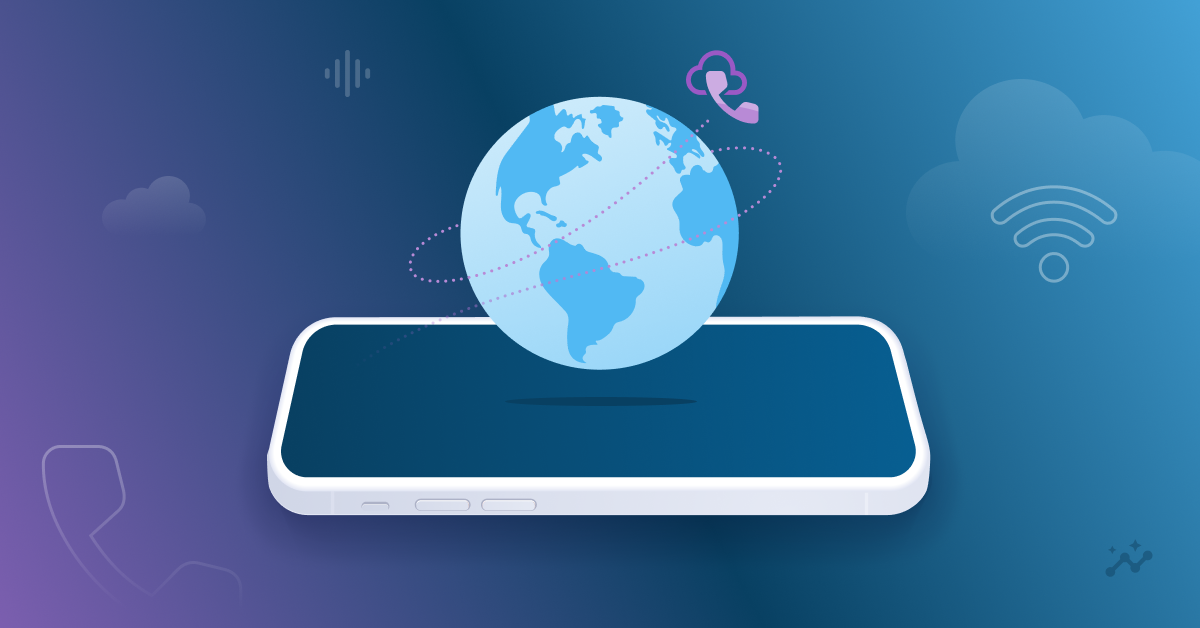As consumers, we often pick up the phone and make hour-long calls, never really wondering how we’re connected, under the hood.
Two major technologies have dominated the complex telephony systems that allow us to send and receive calls—PSTN (Public Switched Telephone Network) and VoIP (Voice over Internet Protocol). Today, we’re here to define these for you, and help you figure out which one works best for your business.
What is VoIP?
VoIP stands for Voice over Internet Protocol, and is a digital technology that allows individuals and businesses to make calls over the internet connection as opposed to dedicated telephone lines. You can make VoIP calls over devices and applications that are connected to the internet.
VoIP sidesteps the need for circuit-switched telephone networks, or PSTN connectivity, for making calls. Instead, it converts audio and video into data packets using codecs and transmits them over an IP network—enabling voice communication to be integrated with other data services, such as video conferencing and instant messaging. Businesses get their VoIP services from cloud-based unified communications providers like RingCentral.
Enterprise Communications Landscape 2024
Learn how 1,000 IT leaders are using VoIP as a PSTN replacement for their employee and customer communications.

What is the PSTN?
PSTN stands for Public Telephone Switched Network, and is VoIP’s predecessor in the grand scheme of telephony. It’s simply how most of us remember telephony working as evident from its other name—Plain Old Telephone System (POTS). This system establishes a call between the caller and receiver via physical telephone lines by completing the circuit.
PSTN is an analog technology used to communicate, while VoIP offers digital, IP-based communications. VoIP comes with the advantages of flexibility, cost savings, scalability, ability to integrate, and global reach. PSTN, on the other hand, has the advantage of legacy, security, and control. Here’s a quick reference guide comparing PSTN vs VoIP:
VoIP vs. PSTN calling
| VoIP | PSTN | |
| Connectivity | Digital connectivity over the Internet via IP networks | Analog connectivity over dedicated physical telephone lines |
| Capacity requirement | Generally higher depending on the call volume. Typically a single line requires 100 Kbps, which is available in most regions these days. | One line typically requires 64 Kbps. |
| Softphones | Softphone applications are supported. | Softphones are not available. |
| Scalability | Adding capacity usually requires only additional bandwidth and software updates. | Adding capacity requires purchasing more hardware and dedicated lines, which can be costly and difficult to integrate. |
| Cost-efficiency | The scalability aspect and dependence on existing internet networks generally make VoIP more cost-efficient. | While local and long-distance calling plan prices can be comparable to VoIP plans, operational and scaling costs can be high. |
| User mobility | Allows for greater mobility with softphones | Limited by connection to dedicated physical lines |
| Security | Depends on the security of the internet connection. Can be susceptible to cyber threats. | Very secure with dedicated telephone lines |
| Reliability | The bandwidth is unreserved. Reliability has improved significantly over the past years with providers like Bandwidth providing 99.999% uptime. | The bandwidth is reserved in advance, so calls rarely drop. |
| Features | Supports features like Call forwarding, Call recording, video conferencing, etc. easily | Call waiting and forwarding may be supported, often at an extra cost. Video conferencing is not. |
| Ease of integration | Integrates seamlessly with UCaaS, CCaaS, and AI applications | Not as integration-friendly |
| Emergency services | Requires organizations to confirm or enter a verified E911 address as per FCC | Allow emergency responders to track the exact physical location due to physical lines |
Seriously considering VoIP for your business?
Learn more about the advantages and disadvantages of VoIP. Businesses are increasingly switching to VoIP to accelerate their growth and cloud journeys. Meanwhile, VoIP providers are constantly innovating to uplevel their security and reliability. Bandwidth’s customers bank on our highly reliable all-IP network with 99.999% uptime for worldwide coverage and our solutions to combat fraud.
If you’re still on the fence about ditching the PSTN and switching to VoIP, our voice experts can help clear the air. Talk to an expert or see our global Voice solutions.




